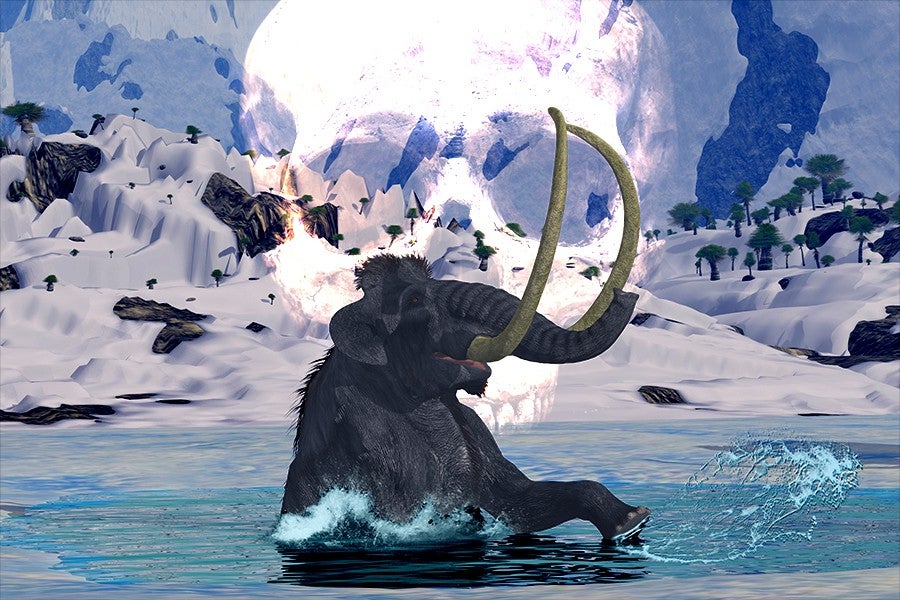Men not asking for directions is a cliche as old as stand-up. And yet, it’s one that seems to have a basis in history — ancient history, in fact.
A report in Current Biology details the efforts of researchers to figure out why, of the 98 existing specimens of woolly mammoths on record, almost 70 percent of them are male. The answer? Male mammoths were far more likely to get lost and blunder into some kind of “natural trap,” like falling through lake ice, or sinking into a bog (or, y’know, driving a scooter into a sinkhole).
The report explains that while most herds consisted of females and young mammoths led by a mature, experienced female, the young, male, bachelor-about-town type mammoths liked to wander off on their own. Without the guidance of said experienced female, a combination of ignorance and risky behavior would frequently be their undoing.
It’s likely, in other words, that for at least half the mammoth skeletons you’ve ever seen in museums, that animal’s last words were some variation of, “Watch this!”
But why are men — and mammoths — so crap at asking for directions, anyway?
Per a study on the subject published in The Leadership Quarterly — cited in this HuffPo piece — it’s mostly down to the fact that men are judged more harshly than women for doing so. Essentially, society deems the act of asking for help to be a feminine trait, and so men who seem needy — even an act as practical as asking how to get back to the main road to avoid being devoured by hillbilly cannibals — are automatically regarded as not meeting the required standard of masculinity.
Whether these hapless mammoth dudes were also bowing to said societal pressure, or simply young mammoth bros doin’ their thing, is unclear. What is clear is that such gender roles are outdated and unhelpful, and if you’re lost, you should of course feel free to ask for directions without fear of ridicule, be you woman, man or mastodon.
Failing that, you could always just keep a map in your trunk (I’m so sorry, I couldn’t help it).

